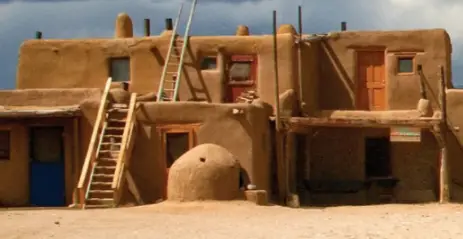Native American homes are as diverse as their culture. Though this is not as evident now, Native American Indian homes in the past say a lot about the tribes themselves. It has been their form of identification. What makes it more fascinating is that these Native American tribe homes were really made by hand; thus, infusing the creativity of the tribes who reside in them. The common Native American homes in the past are the following:
Native American Homes – Longhouse
This specific home was mainly occupied by Eastern Woodland Indians. The characteristics of the home allow many members of the tribe to occupy at the same time. For privacy, families are given their own divisions within each Longhouse. What makes Longhouse occupiable by many families is that its length can extend up to 200 feet long and 25 feet wide. Although, during those times, the metric system they used were campfires. Each Longhouse ranges from 10 to 12 fires long.

Native American Homes – Teepees
These are the homes of Plains Indians. The characteristic of the specific house is perfect for nomads. It is made by connecting different poles on the top. It takes the shape of a pyramid. Women are often the ones given the task to build teepees and it usually just takes 20 to 30 minutes. Teepees can be adjusted in order to adapt to the weather by raising or lowering the coverings.

Native American Homes – Wigwam
Wigwams are often made out of bark, rushes, animal skins and arching of poles. They are somewhat alike Teepees. The Algonquian Indians are known for using this type of dwelling. These are often found in woodland areas. Wigwams are basically small, with the length of only 8 to 10 feet. The shape can vary, it can be a dome, cone, or rectangle.They are being held together by ropes and wood strips wrapped around them. This type of dwelling suits non-nomadic American Indians.

Native American Homes – Chickees
This Native Americans home is a log cabin-type of home It can reach up to two stories. It was firstly created by the Seminole tribes. It is characterized as a disposable home; thus, perfectly fit for the nomad tribes. It is often made of cypress logs and palmetto palm leaves. The reason behind its bare look is that they are often being built in tropical areas. Tarps are just placed during rainstorms. At the same time, the long post attaching the home to the ground is designed for the purpose of keeping away from swamp animals.

Native American Homes – Adobe Pueblo
This type of home is more of a complex, multi-story house. It is often made of clay and straw that are bound into hard bricks. It is in high contrast to the common American Indian homes that are made of wood and cloth alone. The Adobe Pueblo can be characterized as the apartment of the historic times. One pueblo can serve as a dwelling place for an entire clan. Like the Chickees, this home is best for tropical, warm and dry areas because it keeps the cement hard and dry. The structure implies that this best serves non-nomadic tribes, often the farming tribes.

Native American houses school project, Native American wigwam, Native American homes project, Native American longhouse, Native American teepees, what are wigwams made of, wigwam facts, great plains homes
